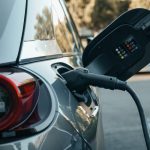Best Practices for Charging RV Batteries
Best Practices for Charging RV Batteries
When it comes to RVing, the last thing you want is to find yourself stuck in a remote area with a dead battery.
Knowing the best practices for charging RV batteries is crucial for ensuring a hassle-free adventure. This blog
post will guide you through the most effective methods to maintain and charge your RV batteries, so you can
enjoy your travels with peace of mind.
Understanding RV Battery Types
Before diving into the charging methods, it’s essential to understand the different types of RV batteries.
Generally, RVs use three main types of batteries: lead-acid, AGM (Absorbed Glass Mat), and lithium-ion.
Each type has its own set of characteristics and charging requirements.
Lead-Acid Batteries
Lead-acid batteries are the most common type found in RVs due to their affordability. They come in two
variations: flooded and sealed. Flooded lead-acid batteries require regular maintenance, including checking
water levels and cleaning terminals.
AGM Batteries
AGM batteries are a type of sealed lead-acid battery that offers greater efficiency and longer life compared to
flooded batteries. They are maintenance-free and can handle deeper discharges without compromising their
lifespan.
Lithium-Ion Batteries
Lithium-ion batteries are the premium choice for RVers. They are lightweight, have a longer lifespan, and charge
faster than lead-acid batteries. Although they come with a higher upfront cost, their advantages make them an
excellent investment for frequent travelers.
Optimal Charging Methods
Charging your RV batteries correctly is vital to ensure their longevity and performance. Below are the best
practices for charging each type of RV battery.
Using a Three-Stage Charger
A three-stage charger is the most recommended option for charging RV batteries. This type of charger operates in
three stages: bulk, absorption, and float. The bulk stage delivers a high current to charge the battery quickly
to about 80% capacity. The absorption stage reduces the current to charge the battery slowly to full capacity.
Finally, the float stage maintains the battery at full charge without overcharging it.
Solar Charging
Solar charging is an eco-friendly and cost-effective method for keeping your RV batteries charged. Installing
solar panels on your RV roof can provide a continuous power source, especially during extended boondocking
trips. Ensure you have a solar charge controller to prevent overcharging and maximize the efficiency of your
solar setup.
Generator Charging
Using a generator is a reliable way to charge your RV batteries, particularly when you’re off-grid. Make sure to
use a generator with an appropriate power output to match your battery’s requirements. Running the generator for
a few hours each day can keep your batteries charged, but be mindful of noise regulations and fuel consumption.
Maintaining Your RV Batteries
Proper maintenance is key to extending the life of your RV batteries. Here are some actionable tips to keep your
batteries in top condition:
Regular Inspections
Conduct regular inspections to check for any signs of corrosion, loose connections, or damage. Clean the battery
terminals with a mixture of baking soda and water to remove any corrosive buildup.
Water Levels
If you have flooded lead-acid batteries, check the water levels regularly and top them up with distilled water
when necessary. Avoid overfilling, as this can lead to spillage and damage.
Temperature Control
Batteries perform best at moderate temperatures. Extreme heat or cold can affect their efficiency and lifespan.
During winter, consider using a battery heater or insulating your battery compartment to prevent freezing.
Proper Storage
If you plan to store your RV for an extended period, disconnect the batteries and store them in a cool, dry
place. Charge them fully before storage and check their charge levels every few months to ensure they remain
healthy.
Common Mistakes to Avoid
Even experienced RVers can make mistakes when it comes to charging their batteries. Here are some common pitfalls
to avoid:
Overcharging
Overcharging can cause significant damage to your batteries, reducing their lifespan and efficiency. Use a smart
charger with an automatic shut-off feature to prevent overcharging.
Undercharging
Consistently undercharging your batteries can lead to sulfation, a process where lead sulfate crystals form on
the battery plates, reducing their capacity. Ensure your batteries are charged to full capacity regularly.
Mixing Battery Types
Mixing different types of batteries can lead to imbalanced charging and reduced performance. Stick to using the
same type and age of batteries in your RV.
Ignoring Warning Signs
Pay attention to warning signs such as slow cranking, dim lights, or a foul smell coming from the batteries.
These could indicate underlying issues that need immediate attention.
Conclusion
Properly charging and maintaining your RV batteries is essential for a smooth and enjoyable RVing experience. By
following the best practices outlined in this guide, you can ensure your batteries remain in top condition,
providing reliable power for all your adventures. Whether you choose lead-acid, AGM, or lithium-ion batteries,
understanding their unique requirements and avoiding common mistakes will help you get the most out of your
investment.
Remember, a well-maintained battery not only enhances your RV’s performance but also contributes to a more
sustainable and cost-effective travel experience. Happy RVing!

Leave a Reply